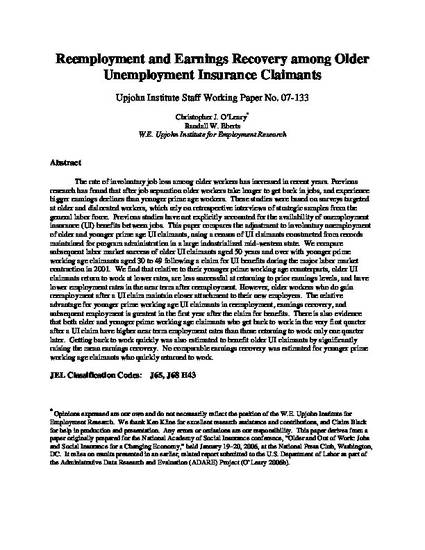
The rate of involuntary job loss among older workers has increased in recent years. Previous research has found that after job separation older workers take longer to get back in jobs, and experience bigger earnings declines than younger prime age workers. These studies were based on surveys targeted at older and dislocated workers, which rely on retrospective interviews of strategic samples from the general labor force. Previous studies have not explicitly accounted for the availability of unemployment insurance (UI) benefits between jobs. This paper compares the adjustment to involuntary unemployment of older and younger prime age UI claimants, using a census of UI claimants constructed from records maintained for program administration in a large industrialized mid-western state. We compare subsequent labor market success of older UI claimants aged 50 years and over with younger prime working age claimants aged 30 to 49 following a claim for UI benefits during the major labor market contraction in 2001. We find that relative to their younger prime working age counterparts, older UI claimants return to work at lower rates, are less successful at returning to prior earnings levels, and have lower employment rates in the near term after reemployment. However, older workers who do gain reemployment after a UI claim maintain closer attachment to their new employers. The relative advantage for younger prime working age UI claimants in reemployment, earnings recovery, and subsequent employment is greatest in the first year after the claim for benefits. There is also evidence that both older and younger prime working age claimants who get back to work in the very first quarter after a UI claim have higher near term employment rates than those returning to work only one quarter later. Getting back to work quickly was also estimated to benefit older UI claimants by significantly raising the mean earnings recovery. No comparable earnings recovery was estimated for younger prime working age claimants who quickly returned to work.
